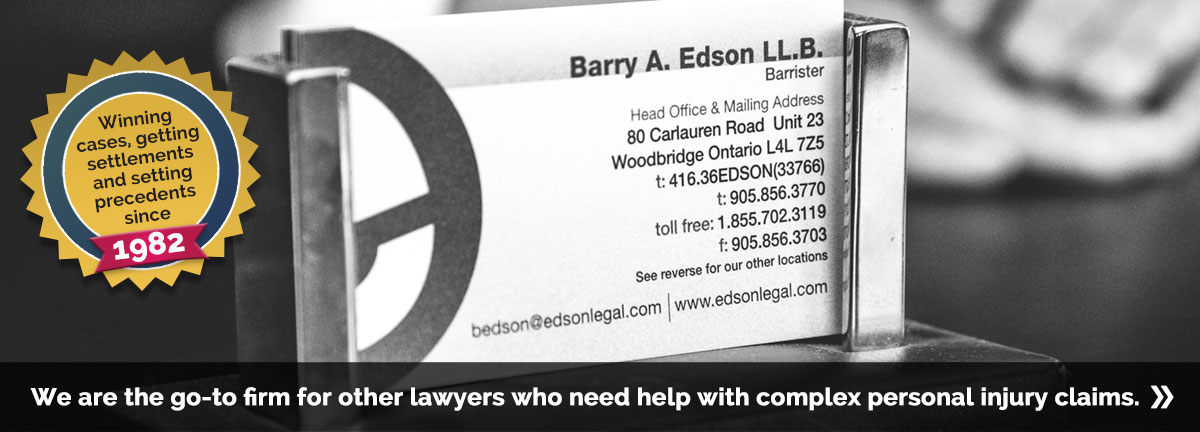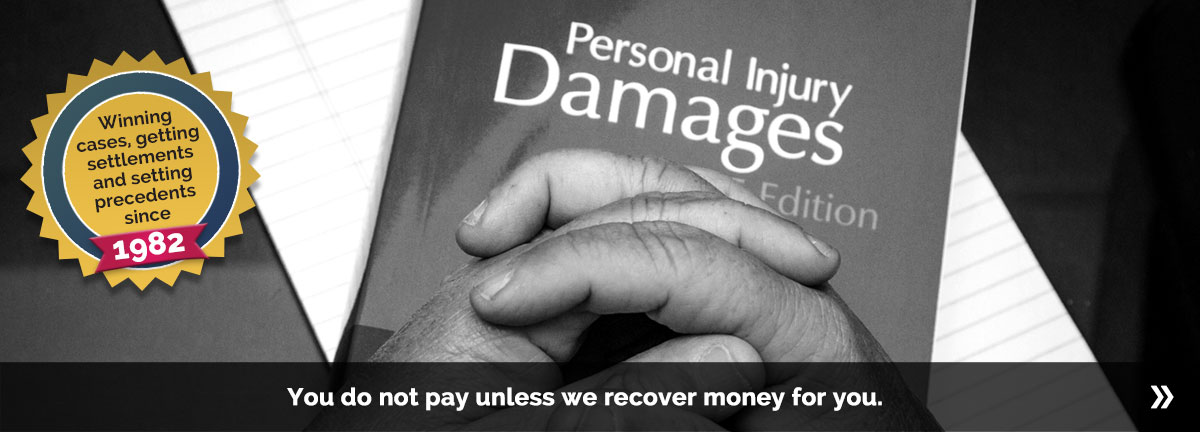Introduction In this first part of our two part installment, we explore the various factors that need to be considered when making a long-term disability claim. First, we start by looking at some disability insurance concepts, particularly the interpretation of “total disability” followed by the distinction between coverage based on “own occupation” and “any occupation”. The second part involves a discussion on the subjectivity of assessing claims and the ‘credibility-war’ often waged by insurers in order to undermine the plaintiff. The objective is to provide readers with an understanding of legal precedents regarding chronic fatigue or fibromyalgia, insurance company tactics, and the reason why an expert long-term disability lawyer is vital to achieving a successful claim.
“Total Disability” Interpretation In order to qualify for long-term disability benefits, insurance policies usually require that the claimant have “total disability” that prevents them from engaging in any gainful occupation specific to education, training or experience (known at the “own” occupation test). The test is usually applied to the first two years of disability payments whereby the policy usually changes to payments that are only made to the claimant if they are “totally disabled” from performing any occupation within their training or education or background (known as the “any” occupation test). The Supreme Court of Canada ruling in Sucharov v Paul Revere [1983] establishes the principles which apply to the interpretation of “total disability”. In the case, the insured was the owner-manager of an insurance brokerage company who suffered from hypertension and stress. As owner-manager, he wore many hats and was involved in all aspects of the business including but not limited to operating a brokerage, bookkeeping, sales and customer services. At the onset of his illness, he could perform all these tasks individually, but when business required him to do them all he would be overcome with anxiety that prevented him from functioning. Justice Laskan, in the majority decision, determined that in order to define “total disability” one must look at the job as a whole. He went on to add that the insured is disabled so long as he could not perform “substantially all” of the normal duties of their respected occupation. In subsequent cases such as Hiscock v Metropolitan Life [1989], Sucharov has been taken to mean that the policy definition of disability is to be construed in a liberal fashion, and that the term “total disability” means substantial inability regardless of the particular language of the policy. Furthermore, while the distinction between “own occupation” and “any occupation” coverage is important, the principles of interpretation established in Sucharov apply to both categories of coverage. Disability will always mean the substantial inability to perform the proposed job taken as a whole, and not the complete inability to perform each and every one of the discrete tasks that make up the job. Furthermore, the Courts have often stated that the insured should be considered disabled unless they can perform their regular duties on a consistent basis. The case of Dale v Commercial Union [1980] elaborated on this point by stating that the insured may still be considered disabled, even if they are able to work in a sheltered/non-competitive environment.
Onus The use of medical evidence and credibility of claimant is vital to establishing that on a balance of probabilities that he or she qualifies for the disability benefits. With respect to credibility, it is something that comes up extensively in litigation, a topic we will explore in the next segment. However, for the purposes of fleshing out general concepts, claimants should be aware that the best way to prove that they are unable to perform their duties is to attempt to return to work. The often quoted paragraph from Foden v Co-Operators (1979) states that: “No one should be discourages from attempting to take up their former employment or any work out of fear that the attempt might be held against them. Far from necessarily proving that an insured has capability of performing his task, it may … prove the reverse. There is no better evidence of incapacity to perform a task than the failure of honest and sustained attempt to do it” Even if the claimant does offer some consistency in the form of part-time or modified work, they may still be qualified for disability benefits. However, if the claimant is unable to return to work, strong medical evidence is required. Such evidence is important regardless of the “own” or “any” occupation distinction. The court will normally hear the testimony of the insured’s treating physicians, as well as that of specialists retained by both sides, a diagnosis is not prerequisite to a finding of disability. So long as evidence shows an inability to work, it is not necessary for the insured or their doctor to precisely identify the disabling condition.
Own Occupation Coverage Own occupation coverage means that the insured is entitled to benefits so long as he is unable to resume his regular occupation. In other words, the occupation the insured was engaged in at the time he became disabled. Reasons for disability can include pain, fatigue or medication among others. Courts recognize that some jobs require much greater precision and consistency than others, which is why the meaning of what it means to be disabled is subject to the insured’s respected field of work. As mentioned in the case of Sucharov business owners are often forced to continue to work through the pain in order to keep their business open, but this is not determinative of the existence of a disability. For employees of a company, Foden tells us they can claim benefits as long as they can establish that their duties are restricted to light work or that their responsibilities have been displaced to co-workers. If the claimant is a specialist, there might be some conflict when it comes to defining what that specialty is and an alternative occupation. For example, in Attridge v Fidelity & Casualty Co. (1972) the insured’s occupation was that of an ear, nose and throat specialist, and held that he was disabled from this occupation. The court found that while he was unable to perform such a task, he was not barred from general practitioner work, and as such could continue his practice. Defining the specialty is something that needs to be given considerable thought, as it can be detrimental to the claim, or amount of benefits received.
Any Occupation Coverage As mentioned before a common employer’s group insurance policy provides the disabled with own occupation benefits for a period of one or two years, which transitions to a period of long-term disability coverage on an any occupation basis. What this means is that the claimant will continue to receive benefits during the “any occupation” period, so long as he is prevented in engaging in work for which he is “reasonably suited by training, education or experience” or work which is suited to his “skill and ability” or something similar. This lowering of threshold from one coverage to another is an important transition in a disability claim. Most insurers will put a claim under scrutiny once it reaches such a point, and request updates from claimant’s physicians or other specialist reports. Insurers are also likely to use their own physicians in order to confirm the insured’s status. As for the court, it will be interested in the insured’s mental and physical condition, age, education, work history, tolerance to stress, energy level, consistency and endurance. All of these matters are taken into consideration in assessing the capacity of the insured to succeed at the proposed job. However, policies do not take into consideration high unemployment, or the insured’s capacity to find work.
Reaching a Resolution As with most civil cases, there is an emphasis on reaching a settlement prior trail. To do this there are essentially two ways in long-term disability issues can be resolved. First, the insurance company can decide to pay the claimant everything owed to date, and agree to continue to provide benefits so long as they meet the relevant disability test. This means that the insured remains dependent on the insurance company, and their constant evaluation of health and employment status. The alternative is to seek a lump sum that can take into consideration pension entitlement, medical, rehabilitative or any other cost associated with an extended disability. However, as we will explore in the next segment, reaching a favorable resolution is dependent on a wide array of defensive tactics insurers use to limit or dismiss disability claim.




